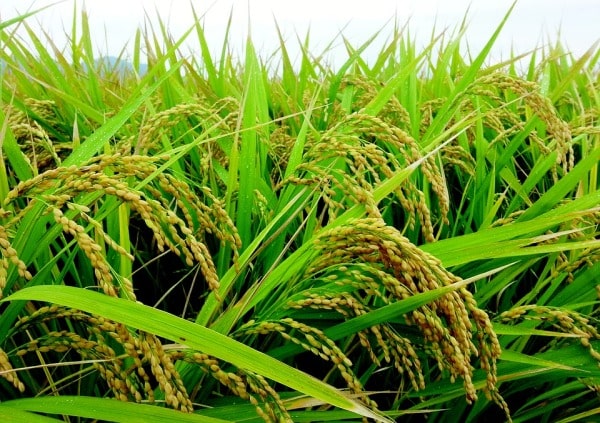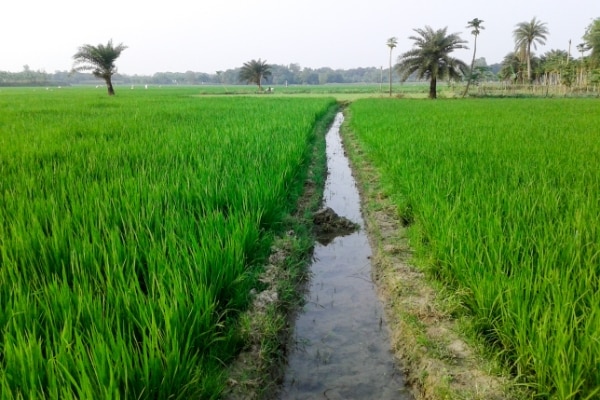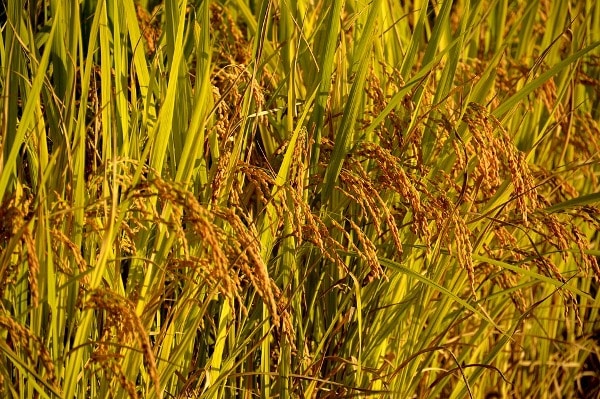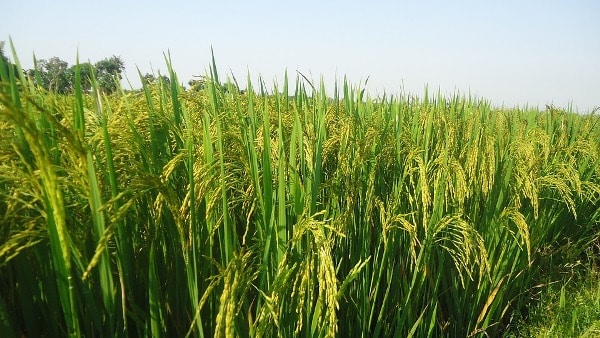Cost and Profit Analysis of Paddy Cultivation / Rice Farming Project Report:
The following information provides cultivation methods of paddy and Rice Farming Project Report.
Introduction
Rice is considered the staple food for a large human population in the world. It is estimated that rice is the third largest produced commodity after sugarcane and maize. Rice plant is a grass belonging to the Oryza Sativa species. Rice is believed to be cereal, monocot grain, which is grown as an annual plant. Some tropical regions cultivate rice as a ratoon crop and it survives as a perennial plant. This plant is majorly cultivated in countries where labour costs are low because cultivating rice or paddy is a labour-intensive task and requires heavy rainfall conditions. Rice is native to Asia and parts of Africa. Rice plants can be grown in different environments like lowlands, coastal wetlands and uplands depending on the availability of water in the area. Two major varieties of rice cultivated around the world are Oryza Sativa Indica and Oryza Sativa japonica.
This rice cultivation project report describes the farming methods and at the end of the project, there is an estimation of investment required for farming and the profit obtained from the farm.
Scope and importance
Rice is considered as life for more than 50% population around the world. Products from rice like the popped rice, puffed rice, rice flakes, canned rice and other fermented varieties are also used in large quantities. Straw obtained from the rice plants is used as cattle feed, roof thatching, for the preparation of hats, mats and litter material. Husk obtained from rice is used as animal feed and for making paper. Rice bran serves as nutrition for poultry and cattle. The oil obtained from rice bran is largely being used for human consumption, soap making etc.
Most of the rice produced in the country is rain-fed and only 59% of the rice-producing area depending on external irrigation methods. Currently, annual rice production in India is expected to be around 111.01 million tonnes. Even though the production is high, there has been a decline in the export of selected varieties of rice from India due to declining in the rupee that has cushioned exporters’ margins.

To maintain the quality of rice for domestic and export purposes, many developmental programs have been organised by the Government of India such as:
- Special rice production programme
- Special food grains production programme (SFPP)- RICE
- Integrated programme for rice development (IPRD)
- Rice seed Minikit programme
- National food security mission
Farmers or individuals can take help from these programmes for efficient crop development.
Rice Plant and its properties
Each rice plant has many tillers, which are shoots that contain roots, stem and leaves. There may or may not be a panicle on the tiller. These panicles bear spikelets, which form the seeds. Generally, the spikelet has both the male and female reproductive organs and that is the reason it is called hermaphrodite.
The seed of the plant is produced for further multiplication of the variety, whereas grain from the plant is considered as the edible part. The grain of rice, which has matured completely and is useful to grow new crops under favourable conditions is called a seed. Seedlings are obtained from the embryo of the seed, which is covered by a hardcover called the hull.
Reproduction in the plant happens through pollination and is followed by fertilization. It takes around 18 to 24 hours for the process of pollination and fertilization. The production of rice seed is possible when the egg in the ovary is fertilized by pollen grains from the anthers of the same spikelet, anthers from other spikelets of the same plant and anthers from the spikelets of other plants of the same variety.
Development of the egg starts within 12 hours of fertilization and after 8 days the endosperm of the growing seed turns milky white. The entire embryo develops in 10 days and the endosperm gets to the soft dough stage 14 days after fertilization. Eventually, 7 days later the dough gets harder and the matured seed is obtained in 25 to 30 days.
Why good seed is required and how to select it?
Rice is the most important crop cultivated all around the world and has high demand because of a large number of consumers. So, the quality and quantity of production are expected to be very high to meet the demand of the population. The right choice of seed is needed for the following reasons:
- Low seeding ratio because of high germination.
- Replanting is not needed.
- Uniform plants could be obtained so that harvesting is easy.
- Vigorous plant growth is obtained with better resistance to insects and pests.
- Early maturity could be expected.
- Good grain quality and higher yield.
- Higher milling because of fewer immature seeds.
To identify a good seed for rice cultivation, one must know that pure seed is full and uniform in size. The seeds should be free from weed seeds, diseases, pathogens and other unwanted matter. Seeds for rice cultivation could possibly be obtained from reliable sources or government based agricultural offices.
Dressing the seed is highly important before sowing because the seeds obtained from the breeder are costly and every effort should be made to ensure their survival after sowing. Generally, the seeds are dressed with chemicals like Thiram. Another mechanism for increasing the rate of seedling production is pre-germinating the seed.
Soil and climate requirements

Rice farming in India is done under diverse agro-ecological zones because it is so widespread in the country and no other country around the world has such diversity. There are four main ecosystems namely irrigated, upland, lowland rain-fed, and flood-prone type of ecosystems. These ecosystems have developed owing to the fact that rice could be cultivated in the varying condition of altitude and climate. This crop needs a hot and humid climate and is exclusively suited for regions with prolonged sunshine and plenty of water. Rice crop needs an average temperature of 21 to 37˚C and can tolerate 40 to 42˚C at the maximum. It has been observed that each stage of the cultivation process demands a different temperature range such as sprouting (10˚C), flowering (23˚C), blooming (26-29˚C), grain formation (21˚C) and ripening (20-25˚C).
The crop is most importantly grown as a Kharif crop during the monsoon (June-July) and harvested during winter (November- December). There are places in India where rice is being cultivated as a Rabi crop, sown during the winter (November-February) and harvested during (March-June). Around 7% of the total rice produced in the country is also grown as a pre – Kharif crop which entirely depends on the rainfall and weather of the region.
The different types of soil suitable for rice cultivation are black soil, red loamy or yellow loamy soil, laterite soil, red sandy soil, terai, hill and shallow black soil. The quality of soil for rice cultivation should be such that it powders easily on drying and forms a puddle when wet. The soil should have rich organic content and could be either acidic or alkaline in nature.
Land preparation and planting
The land selected for rice cultivation should be fertile with good drainage and water retention capacity. Weeds could be extremely harmful to the plants so they should be removed by ploughing the area to a depth of 10 cm. A second ploughing session is carried out to a depth of 5 to 7 cm with a disc harrow. Bunds in the farm should be at least 0.5 m high and 1 m wide. Level and smooth the surface after ploughing because levelled land ensures uniform water depth throughout all seasons.
The seedbed for cultivation should be prepared just before the onset of the monsoon. If the land is prone to erosion, then it is divided into plots of dimensions 50 x 50 m and bunds are constructed so as to collect the rainwater and allow good drainage. In regions that have a short rainy season, ploughing is done at the end of the previous season. Areas that have zero tillage should be treated with glyphosphate, an herbicide to kill the weeds.
Planting of rice seeds should be on time so as to produce a fast-growing crop that is uniform and produces a high yield. Seeding rate is defined by many factors like plant ecosystem, planting method, depth, seed quality and type. The average panicle population in one m² area are 300 to 400 during the rainy season, whereas it is 500 to 600 panicles per m² during the dry season. There are basically two ways of planting rice seeds:
Drill seeding
- Used in a different type of soil and crop residues having different types of furrow openers.
- The furrow opener could be wooden or metallic.
- Seeds are dropped manually with a spacing of 2 cm in a line.
- Depth of seed sowing should not exceed 3 to 5 cm.
- 5 to 10% of the Seed should be visible on the surface after sowing.
- 35 to 40 plants in a row could be expected.
- Facilitates use of fertilizer application at the time of sowing.
Dibbling
- Seeds are sown in holes.
- Costly seeds are sown as 1 seed per hole, but otherwise, 4 to 6 certified seeds are sown in the same hole.
- Expected seedlings per hole are 3 or 4.
- Spacing between holes is 30 x 15 cm.
- The depth of planting is to be correctly known before sowing.
Manure and fertilizer requirements
Rice crops need uniform and timely nutrition for proper growth and quality grain production. The application of fertilizer depends on the crop stage and the type of fertilizer being used. To improve the fertility of the soil, 3 bags of 50 kgs of each Di-ammonium phosphate (DAP) or single superphosphate is applied at the time of land preparation. Nitrogen fertilizer available as NPK compound should be applied in split doses after one week from sowing. The next dose of nitrogen is supplied in the form of urea around 4 or 5 weeks after the first application. The indication of nitrogen deficiency is known by the yellow colour of crops. So, it is advisable to apply nitrogen whenever there is a yellow patch in the field. The amount of nitrogen application should be reduced during the panicle initiation and flowering stage so as to avoid the risk of pests.
The general observation is that to produce 1 ton of grain requires 15 kgs of nitrogen, 2-3 kgs of phosphorous and 15-20 kgs of potassium. These quantities may change depending on the type of soil, season and crop variety. Organic fertilizers like manure, compost, straw, husk and plant leaves should be supplied in the nurseries. The use of chemical fertilizers should be reduced if more paddy grains are expected.
Irrigation needs
Rice crop needs about 1500 litres of water to produce 1 kg of paddy. Water supply largely affects the yield of the crop and should be above the evaporation level. Water is allowed to stand in the field at a depth of 2 to 5 cm after transplanting so as to facilitate seedling establishment. Until the crop attains the dough stage, a water depth of 5 cm is maintained and water is drained before harvesting to facilitate quick and uniform maturity of the grain. To increase the water use efficiency the following is done:
- Bunds are maintained.
- Fields are levelled.
- Puddle the fields when required.
- Using direct seeding methods.
- Using short duration varieties.
- Timely harvest.
Saline water is not suitable during the seedling stage and panicle formation stage because it causes the firing of the leaves and reduced dry matter.
Disease and pest management of Rice crop
Common pests found in rice crops are stalked-eyed flies, African rice gall midge, rice leaf folder, stem borer, stink, mealy and rice bugs, rice weevil, termites, etc. and some common diseases infecting the rice crops are yellow mottle virus, rice blast, leaf blast, collar rot, node blast, sheath blight, brown spot, leaf scald, sheath rot, grain rot, false smut etc. It is believed that farmers lose 37% of the crop each year due to pests and diseases. Instead of focusing on treating the disease, it is highly important to prevent the disease and pest from occurring. The following cultural practices could help maintain a healthy crop:
- Equipment used in the farm should be disinfected properly.
- Maintenance of bunds and field cleaning at regular intervals (seasons).
- Use of clean and resistant varieties of crops (mostly certified varieties).
- All the rice farming fields (neighbouring) should plant rice seeds at the same time to avoid the risk of insects, pests and rodents on individual farms.
- Avoid overdosing the farms with fertilizers.
- Encourage the use of natural fertilizers.
- Avoid pesticides within 40 days of planting.
It is important to understand that while using chemical pest and disease control sprays proper safety precautions should be observed while mixing and spraying. Also, only recommended dose of chemical should be utilized for the farm.
Read this: Frequently Asked Questions About Plant Diseases.
Intercultural activity in Rice field
Weeds are the major problem in the rice farms because they compete directly with the plants and reduce yield. It has been observed that there could be 1 kg of grain loss for every 1 kg of dry weeds. Destruction by the weeds is caused during the first 20-50 days of crop establishment. Weeding should also be done after panicle formation. Effective weed management can be done by the following ways:
- Ploughing and harrowing should be done with an interval of 10-14 days after rain.
- Proper land levelling should be done.
- An Early vigor, variety of seeds should be used.
- Water in the field prevents the growth of weeds.
- First weeding is done after 2-3 weeks of crop establishment with an interval of 2-3 weeks for second weeding
- Use herbicides if weed growth is severe.
- Pre – emergence sprays should be used prior to planting.
- Crop damage can be prevented by the use of the post harvest spray.
Harvesting and yield of Paddy

Timely harvest is extremely important for maintaining the quality and yield otherwise there could be a possibility of unfilled and immature grains or loss of grains through shattering and bird attacks. The rice crops could be harvested when the grain moisture is in between 20 to 22% (obtained after 30 days of flowering), the grains have turned into straw colour, the grains have turned hard in the lower part of the panicle, squeezing the grain from the teeth is easy. It is essential to maximize the grain quality after harvest and the following is done to maintain quality:
- Ensure that the panicles don’t lay on the ground or in water.
- Thresh the cut panicles within 24 hours.
- Dry the grains immediately after threshing.
- Sun drying grains should be stirred every one hour for uniform drying.
- Clean drying pads or tarpaulins could be used.
- Grain layer should be 3 to 5 cm thick for drying.
- Protect the grains from too hot climate and rain.
- Winnow the grains thoroughly after drying.
- Store the grains in a cool, dry and clean area sealed properly in a bag.
There are two common methods for harvesting rice crops manually (traditional methods) such as a panicle reaping and long stalk cutting by sickle; both these methods require 240 labour hours and 80-180 labour hours per hectare respectively. It is observed that one hectare of land produces approximately 30-50 quintals of rice grains depending on the facilities provided and management techniques used.
Post harvest management of Paddy
Threshing is separating the kernel from the panicle by rubbing, impact or stripping. Threshing can be done either manually or mechanically. Mechanical threshers have an in built stripping action and could be either pedal operated (work capacity 40-50 kg per hour) or power operated (work capacity 200-1300 kg per hour). Threshing the crop incurs loss of grain because some grains remain in the panicle, grains get scattered before threshing, grains stick in the mud on the floor or when birds feed on the grain.
Rice grains are generally harvested with 21 to 26% of moisture and to avoid the grain being susceptible to insect attacks, micro-organisms and other pests, it is recommended to dry the grains within 24 hours of harvest. If it is intended to store the grain for short duration say for about 2 weeks, then grain are dried such that they have only 14% moisture content. It should be clearly understood that the delay in drying could result in microbial growth, mycotoxins produced, non-enzymatic browning, etc. It has been observed that in tropical regions due to unpredictable weather conditions, there is a possible loss of grain from 1 to 5% during drying. Paddy seeds need a minimum temperature of 43˚C for drying in the shade and paddy as food grain needs a temperature of not more than 54˚C for drying. Drying at minimum temperature ranges preserves the aroma of the grains.
Paddy cleaning is an essential post harvest task which involves removal of unwanted weed seeds, straw, chaff, panicle stems, empty grains, damaged grains, sand, rocks, stone, dust, plastic, any metal substances etc. from the harvest and threshed rice grains. This process of cleaning is done immediately after threshing and drying. Initially, the farmer uses hand raking and sifting to remove straw, chaff and other dense materials and then winnowing is done. A winnowing is a slow natural way of cleaning, where the grains are made to fall from a height onto a tarpaulin sheet on a windy day. The grains get cleaned (sand, dust, other minute particles) by the force of wind.
Finally, the storage of the rice grains is required to protect them from extreme heat, cold and moisture. Lack of adequate storage space for grains obtained from large or medium farms results in either damage of the grains by insects or rodents or is sold to companies and traders immediately after harvest at a lower rate. Storage loss occurs due to insects, rodents, birds, moisture content, theft and pilferage. The seeds could be preferably stored in containers made of wood, metal, concrete or they could be stored in the hermetic (sealed) storage bags which have the capacity to control the moisture content while storing.
Cost and profit analysis / Economics of Paddy Cutivation / Rice Farming Project Report

Every state depending on the availability of resources has a different investment structure. The labour involved in the farming activities also largely varies for each state. The average values of general requirements have been mentioned here for reference and could possibly be different based on the location of the farm. Investment on land, transport, buildings, depreciation, etc. have not been included in the calculation of the profit because they are highly non-consistent, but are extremely important while planning for a practical implementation of a rice farming business.
Assumptions made for 1 hectare of land:
Cost of paddy seeds per kg: Rs 100.
Charge of labour per manday: Rs 300.
Cost of bullock labour per pair-hours: Rs 250.
Cost of manure per kg: Rs 10.
Cost of fertilizers per kg: Rs 100.
| Labour and materials | Investment in Rs |
| Cost of 77 kgs of seeds as planting material | 7,700.00 |
| Human labour @ 110 mandays (approx) | 33,000.00 |
| Animal labour @ 5 pair days | 1,250.00 |
| Machine labour @ 5 hours | 3,000.00 |
| Cost of 232 kgs of fertilizers | 23,200.00 |
| Cost of 19 quintals of manure | 19,000.00 |
| Irrigation charges | 90,000.00 |
| Plant protection chemicals /organic substances | 10,000.00 |
| Farm fencing | 30,000.00 |
| Other miscellaneous charges | 30,000.00 |
| Total | 2,47,150.00 |
Yield of rice grains per hectare: 60 quintals (average).
The sale price of rice grains per kg: Rs 50 (average price, may vary on the basis of quality and variety).
Income from the farm: Rs 3, 00,000.
Profit from the business: Rs 52,850.
Loans and subsidies for Paddy Cultivation
The National Food Security Mission (NFSM) –RICE has a specified pattern for assisting farmers on different components in the rice farming structure and the detailed information could be found on the NFSM website.
Every state has subsidy programmes for producing rice. The details of the schemes could be found on the Agriculture Department website.
In case if you are interested in this: How To Grow Organic Lettuce.
- Economical Aquaculture: A Guide to Low-Budget Fish Farming
- 15 Common Planting Errors That Can Doom Your Fruit Trees
- How to Make Houseplants Bushy: Effective Tips and Ideas
- Innovative Strategies for Boosting Coconut Pollination and Yield
- Pollination Strategies for Maximum Pumpkin Yield
- The Complete Guide to Chicken Fattening: Strategies for Maximum Growth
- Natural Solutions for Tulip Problems: 100% Effective Remedies for Leaf and Bulb-Related Issues
- Revolutionizing Citrus Preservation: Towards a Healthier, Greener Future
- Natural Solutions for Peony Leaf and Flower Problems: 100% Effective Remedies
- Maximizing Profits with Avocado Contract Farming in India: A Comprehensive Guide
- Natural Solutions for Hydrangea Problems: 100% Effective Remedies for Leaf and Flowers
- The Ultimate Guide to Choosing the Perfect Foliage Friend: Bringing Life Indoors
- From Sunlight to Sustainability: 15 Ways to Use Solar Technology in Agriculture
- The Ultimate Guide to Dong Tao Chicken: Exploring from History to Raising
- The Eco-Friendly Makeover: How to Convert Your Unused Swimming Pool into a Fish Pond
- Mastering the Art of Delaware Chicken Farming: Essentials for Healthy Backyard Flocks
- 20 Best Homemade Fertilizers for Money Plant: DIY Recipes and Application Methods
- How to Craft a Comprehensive Free-Range Chicken Farming Business Plan
- Brighten Your Flock: Raising Easter Egger Chickens for Beauty and Bounty
- How to Optimize Your Poultry Egg Farm Business Plan with These Strategies
- Subsidy for Spirulina Cultivation: How Indian Government Schemes Encouraging Spirulina Farmers
- Ultimate Guide to Raising Dominique Chickens: Breeding, Feeding, Egg-Production, and Care
- Mastering the Art of Raising Jersey Giant Chickens: Care, Feeding, and More
- Ultimate Guide to Raising Legbar Chickens: Breeding, Farming Practices, Diet, Egg-Production
Rice sell price are wrong.
What is the average good quality rice price? Is not Rs50/kg? Again, Rice price fluctuates depending on variety
Dear sir,
Rice grain prices per Quintal (100 kg) is 1400. the price of 50 rs/kg as you have mentioned is the consumer price.
Where can I get rice grains Rs 14 per kg?
I am very much interested in Rice farming can you help me I have more than ten thousand land just along the river side please help me.